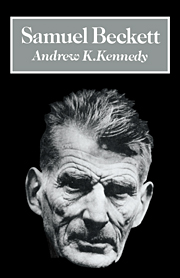5 - Happy Days
Published online by Cambridge University Press: 23 February 2010
Summary
At first sight, Happy Days appears to have several features which significantly change, if not reverse and parody, the remorseless worlds of the preceding plays. Winnie, who dominates the play, is an average, world-loving woman as against the decaying male intellectuals who keep recurring in the earlier plays (Nell in Endgame is the only previous female character). Winnie's optimistic chatter can also be contrasted with the frequently lifedenying, nihilistic utterances of protagonists in the other plays. Winnie's tone of voice often rises from cheerful to exuberant, from little phrases of consolation to fragments of prayer, hymns of praise, lyric poetry and a song: her performance makes us almost forget that the speaker is buried in a mound of earth. Blazing light illuminates the stage in contrast to the dark interiors of Endgame and Krapp's Last Tape; and the stage may be seen to be open to infinite space while the two earlier plays mentioned have closed prison-cell-like scenery. It takes time for the reader or the audience to realise that the blazing light may be a form of ‘hellish light’ and that the open expanses of space may point only to infinite emptiness. It also takes time to become fully aware of the terrible irony in Winnie's praise for the created world.
That terrible irony – an enchanted voice tied to a dying body – links up with other family resemblances to the preceding plays.
- Type
- Chapter
- Information
- Samuel Beckett , pp. 76 - 91Publisher: Cambridge University PressPrint publication year: 1989



